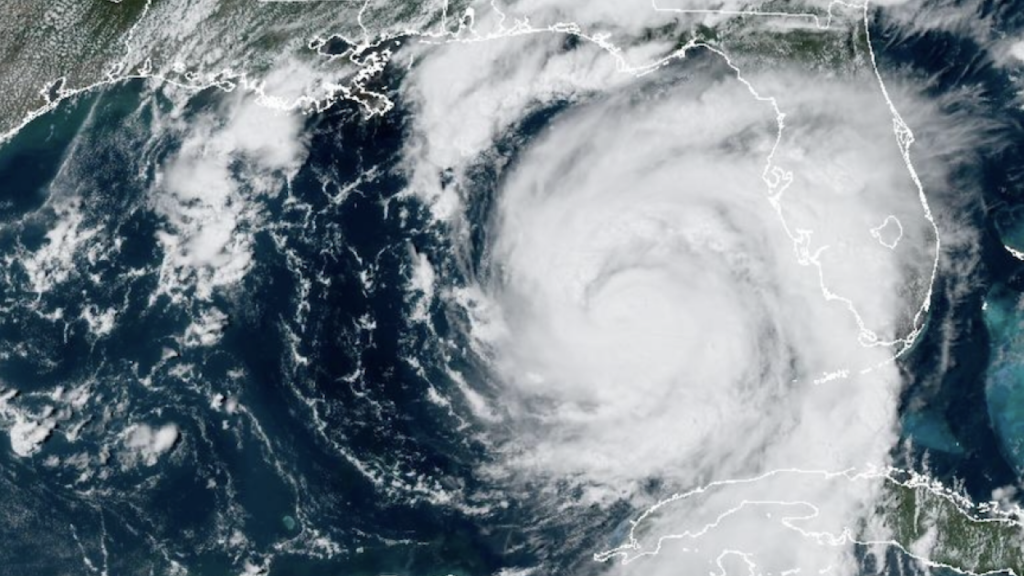Hurricane Idalia Path And Timeline: Category 4 Storm Expected To Hit Florida
As Hurricane Idalia gains strength and approaches the Florida Gulf Coast, meteorologists are sounding the alarm for an impending catastrophic event. The storm is projected to make landfall as an extremely dangerous Category 4 hurricane, bringing with it the threat of “catastrophic” storm surge and destructive winds. Here’s what you need to know about the path and timeline of Hurricane Idalia as it heads toward Florida.
Hurricane Idalia’s Strength and Potential Impact

Idalia, previously a Category 3 hurricane, is anticipated to intensify further and become a Category 4 storm before it reaches Florida’s Gulf Coast. The National Hurricane Center has highlighted the likelihood of a “catastrophic” storm surge, a life-threatening phenomenon, as the hurricane approaches. Cities such as Tampa and Orlando are expected to be impacted by Idalia’s wide-ranging path.
Expected Landfall Time
The timeline for Hurricane Idalia’s landfall is early Wednesday morning, with the Big Bend area of Florida’s Gulf Coast as a probable target. Florida Governor Ron DeSantis has urged residents in the projected path to prepare for major impacts from the impending storm. The storm’s center was located approximately 100 miles southwest of Cedar Key, Fla., and 175 miles south of Tallahassee, moving north at 15 mph with maximum sustained winds of 120 mph.
Evacuation and Safety Measures
Governor DeSantis has strongly advised individuals within evacuation zones to leave immediately, emphasizing that staying behind during the storm could jeopardize their safety. He highlighted that first responders won’t be able to assist until after the storm has passed. The hurricane’s potential for unprecedented storm surge has prompted evacuation orders and recommendations across numerous counties, with preparations including the mobilization of National Guard members and electricity workers for power restoration.
Florida’s Vulnerable Gulf Coast
Florida’s Gulf Coast, spanning from the southern peninsula to the Panhandle, is particularly vulnerable to Idalia’s impact. The National Hurricane Center has issued hurricane warnings and storm surge watches for several regions, including Tampa Bay. The projected landfall area has shifted westward, putting communities such as Tallahassee at risk of direct impact. The risk of life-threatening storm surge and hurricane-force winds remains significant.
Projected Path and Beyond
Meteorologists expect Hurricane Idalia to maintain hurricane strength as it moves across southern Georgia and reaches the coasts of Georgia and southern South Carolina. The storm’s path suggests a trajectory over the Gulf of Mexico toward Florida’s northwest coast, followed by its journey across northern Florida and the coastal regions of Georgia and the Carolinas. While weakening is expected, the storm’s impacts could still be substantial.
Concurrent Threats: Hurricane Franklin
As Hurricane Idalia approaches Florida, it’s important to note Hurricane Franklin’s presence in the Atlantic. Although Franklin isn’t predicted to make landfall on the East Coast, its influence is expected to cause rough surf conditions and rip currents along the coastline.
With Hurricane Idalia’s potentially catastrophic impact looming, Florida residents must heed evacuation orders and take safety precautions. The storm’s strength and the projected storm surge emphasize the critical need for preparedness and vigilance. As meteorologists continue to monitor Idalia’s path, its potential to bring life-threatening conditions requires utmost attention and action.
Get The Latest Updates From The World Of Music, Movies, TV, Culture, And Fashion In Musical States Magazine. Please Follow Us On Facebook, Instagram, Twitter, And LinkedIn To Receive Instantaneous Updates



